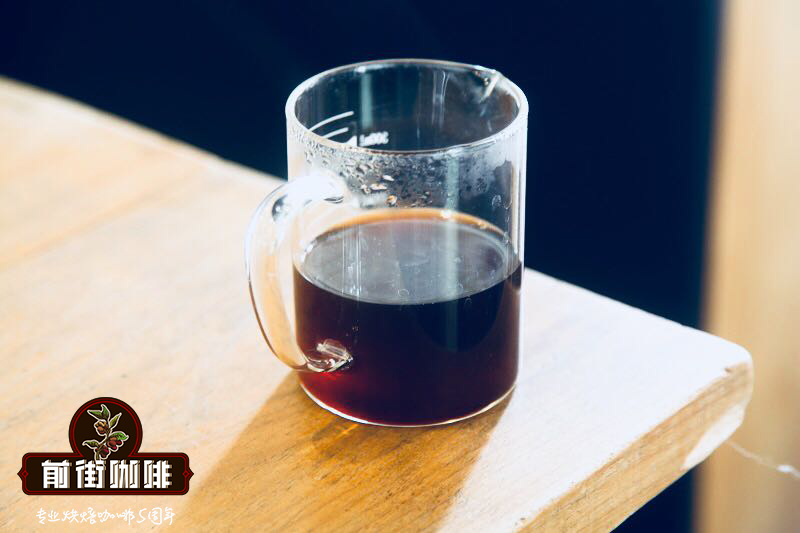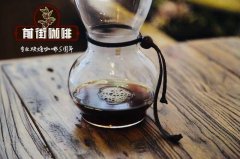What is ECX? Why is it that sometimes the drink of Yega Chefe doesn't have the classic flavor of Yega Chefe?

Professional coffee knowledge exchange more coffee bean information please follow the coffee workshop (Wechat official account cafe_style)
Yejashafi coffee beans, the earliest definition is produced in Ethiopia, a coffee bean called the town of Yegashafi.
Most coffee fans are probably no stranger to Ethiopia, the birthplace of Arabica and one of the most important native / wild coffee gene pools in the world. Most of the production patterns are presented in the form of small farmers' cooperatives. The season is from October to December each year.
Yirgacheff, the most famous producing area in Ethiopia, is located in a small producing area in the Gedeo region of southern Ethiopia, where coffee beans are harvested from local coffee farmers, which can be said to be a collection of the painstaking efforts of many small coffee farmers. At first, Yejasuefei coffee beans were inconspicuous, because the small beans did not conform to the concept that size is beauty, but coffee lovers who had drunk Yega Xuefei were astonished. It is impressive that coffee can have such obvious floral aroma and lemon and citrus flavors. As a result, Ethiopia's Yega Xuefei has become more and more famous, riding the third wave of boutique coffee beans.
Yejashafi is not only the most popular item of boutique coffee, but even Starbucks coveted the name; in 2004, Starbucks tried to register "Yejashafi" as its brand trademark. this angered Ethiopian authorities and coffee lovers around the world. It was not until 2007, when the Ethiopian government filed an international lawsuit, that the name of Yejasuffi coffee was liberated.
Ethiopia's definition of "Yejasuffe" is not just the concept of origin. Under the trading system classification of ECX in Ethiopia, Yega Sheffield is not only produced by the town of Yegashefi, it is officially recognized in Ethiopia as including Wanago, Yirgacheffe, Kochere and Gelena Abaya legal areas.
ECX (Ethiopia Commodity Exchange, the Ethiopian Commodity Exchange Center)
Provides a unified trading platform for several major cash crops, such as corn, beans and later added coffee. ECX has regional warehouses across Ethiopia to provide the collection, grading and storage of crops, and then enter a unified trading and auction platform to buy and sell coffee to registered members of ECX. For coffee, the buyers here are actually private exporters. Since 2008, Ethiopia has stipulated that all private exporters must buy and sell coffee beans through ECX.
Advantages of ECX
Provide a unified platform for trading, a professional warehouse to ensure the storage of raw coffee beans, and a set of grading standards (although it takes a bit of effort to understand, really?) But its problem is that it can not meet the traceability requirements of current buyers for coffee. The coffee traded by ECX is divided by region, such as YirgacheffeA*, or Kochere baked coffee. It can only tell you that the coffee you bought is Yega Chefe, which comes from Yirgacheffe and Kochere. It cannot tell you which processing station you are from. Even the coffee may come from many different processing stations and mixed together and packed in sacks. Auction as a large batch.
(note: a * / ECX *-according to the ECX classification, for coffee from the Gedeo region, the letter after the region name does not represent the information of a smaller region, but whether the coffee has a Yirgacheffe flavor, An is yes and B is not. )
Important Notice :
前街咖啡 FrontStreet Coffee has moved to new addredd:
FrontStreet Coffee Address: 315,Donghua East Road,GuangZhou
Tel:020 38364473
- Prev

The effect of coffee cups on the quality of coffee how many milliliters to buy coffee cups
Professional coffee knowledge exchange more coffee bean information please follow the coffee workshop (Wechat official account cafe_style) do you know that coffee cups can also affect the quality of coffee? To preserve the aroma, temperature and taste of coffee, the material and size of coffee cups are the key! This time, Qianjie Coffee will lead you to explore the knowledge of coffee cup material. Coffee cup made of coffee
- Next

Sumatran coffee Sumatra Aceh Miangaya Coffee introduction.
For more information on coffee beans, please follow the coffee workshop (Wechat official account cafe_style) Aceh, a place famous for the tsunami. Aceh is located at the top of the northwest of the Indonesian archipelago. Because of geographical factors, it has long become an independent kingdom of Islamic faith. Since the 7th and 8th centuries, it has become a country where Islam spread eastward to India and the Middle East.
Related
- Beginners will see the "Coffee pull flower" guide!
- What is the difference between ice blog purified milk and ordinary milk coffee?
- Why is the Philippines the largest producer of crops in Liberia?
- For coffee extraction, should the fine powder be retained?
- How does extracted espresso fill pressed powder? How much strength does it take to press the powder?
- How to make jasmine cold extract coffee? Is the jasmine + latte good?
- Will this little toy really make the coffee taste better? How does Lily Drip affect coffee extraction?
- Will the action of slapping the filter cup also affect coffee extraction?
- What's the difference between powder-to-water ratio and powder-to-liquid ratio?
- What is the Ethiopian local species? What does it have to do with Heirloom native species?

